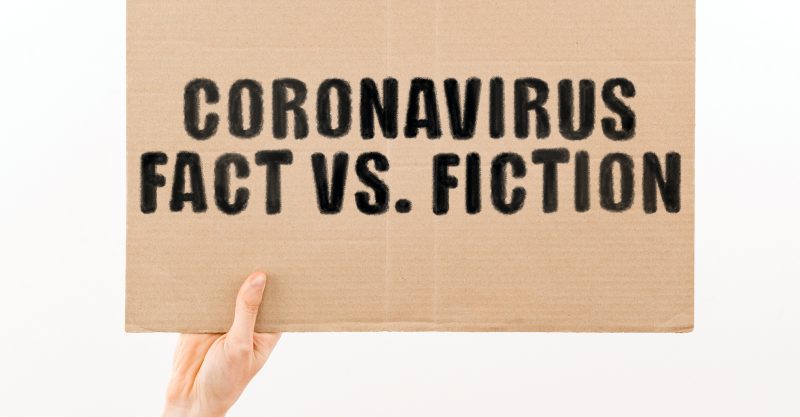Miss a day, miss a lot. Subscribe to The Defender's Top News of the Day. It's free.
Two California epidemiologists this week outlined their objections to a proposed law that would require all K-12 students enrolled in all public and private California schools to be vaccinated for COVID-19 in order to attend in-person classes.
In an op-ed published Tuesday on SFGate, Tracy Beth Høeg, M.D., Ph.D and Vinay Prasad, M.D., M.P.H., wrote:
“As physician epidemiologists, we have analyzed the data and found that this mandate is not supported by the scientific evidence — which is why no European countries or other U.S. states have implemented their own.”
The bill in question, SB-871, was proposed last month by Sen. Richard Pan (D-Sacramento). If passed, it would take effect Jan. 1, 2023.
The law would apply to “any private or public elementary or secondary school, child care center, day nursery, nursery school, family day care home, or development center.” The U.S. Food and Drug Administration (FDA) will meet Feb. 15 to discuss authorizing Pfizer’s vaccine for children 6 months through 4 years old.
Pan’s legislation would require students to get the vaccines even if they are still available only under Emergency Use Authorization (EUA) — unlike California Gov. Gavin Newsom’s executive order last fall mandating the vaccine for all primary and secondary students only once the vaccines are fully licensed by the FDA.
The Pfizer-BioNTech vaccine is the only COVID vaccine authorized for children as young as 5, but only under EUA.
The FDA has not yet granted full approval to any COVID vaccine for individuals under age 16, but the agency did license Pfizer’s Comirnaty vaccine for individuals 16 and older.
Pan’s bill also differs from the governor’s order in that it provides no exemptions for personal or religious beliefs.
“We’re in the middle of a pandemic, and every day that they’re not getting vaccinated they’re more vulnerable,” Pan said during a news conference. He said the law would prevent the spread of COVID in schools.
Prasad and Høeg disagreed:
“That may once have been possible. Unfortunately, with the emergence of the omicron variant, immunization no longer prevents people from catching and spreading the virus long-term … Vaccines stop just 5% to 30% of omicron infections, according to several studies that have yet to go through peer review. Even this benefit seems to evaporate a few months after the last shot.”
Prasad and Høeg reviewed data from peer-reviewed sources, European health officials and from the Centers for Disease Control and Prevention. They concluded the evidence to support vaccine mandates for children simply doesn’t yet exist:
“While the protective benefits of vaccination are extremely clear for adults, the data for children is murkier. First, children are at extremely low risk of severe COVID-19. Even before the emergence of omicron, which is considerably more mild than earlier strains, the virus was less deadly to children than flu and pneumonia, heart disease, car crashes or guns. Centers for Disease Control and Prevention data also suggests that children who have already caught and recovered from COVID-19 may benefit very little from vaccination.”
The authors also addressed the issue of potential vaccine injury, writing that although serious side effects of immunization are “exceedingly rare, mounting evidence suggests even those are more common than severe COVID-19 in some children, including teen boys.”
They wrote:
“We should further study a specific — and rare — side effect called myocarditis that appears to occur in one in 3,000 to one in 7,000 boys between 12 and 17 after a second COVID-19 vaccine dose. Because of these issues, we believe parents should have the right to make an individual risk-benefit calculation for their children.”
On his YouTube Channel, Prasad took pains to point out he is “pro-vaccine” and supports mandatory K-12 vaccines for measles, mumps, polio and other childhood diseases — vaccines that are fully approved and, according to Prasad, provide long-lasting immunity.
But the COVID vaccines are not fully vetted and have not established their efficacy against infection or transmission, Prasad said, adding:
“So by doing this mandatory policy, you‘re not going to prevent kids from getting COVID. They’ll get it anyway. You’re not going to prevent them from spreading COVID. They’ll still be able to spread it.”
Prasad called the mandate “too draconian” and suggested the cure in this case was worse than the disease. Addressing a common analogy made between seatbelt laws and vaccine mandates to justify the latter, Prasad said:
“The penalty for not buckling up is a $100 – $200 ticket. The penalty for this is you are going to take these children and throw them out of school for long periods of time, and we have already failed these children with 18 months of lockdowns … The penalty is just too much: You’re costing them their future.”
Prasad and Høeg also pointed out that since more students of color are among the unvaccinated, the impact of the legislation would have negative consequences for educational equity:
“In December, when the Los Angeles Unified School District tried to implement a K-12 COVID-19 vaccine mandate, they found that 30,000 students ages 12 and older hadn’t met the mandate requirements. If we extrapolate those numbers to the entire state, and take into account lower vaccination rates among children ages 5-11, over a million California children could be forced into remote learning. It is also important to acknowledge that Black and Latino children are less likely to be vaccinated, meaning they would likely be excluded at higher rates than their white peers.”
Pan was the lead sponsor of legislation passed in 2015 that eliminated the personal belief exemption for K-12 vaccine requirements for mandated vaccinations against measles, mumps, rubella, diphtheria, hepatitis B, influenza type B, polio, whooping cough, tetanus and chickenpox.
He also sponsored legislation in 2019 that undermined the authority of family physicians to recommend medical exemptions by making such exemptions automatically subject to state review.
California is unique among the 50 states in pursuing such blanket COVID vaccine mandates for children in school. Another bill pending before the state legislature would allow children between 13 and 18 years old the right to receive vaccines without parental consent.
With all these mandates in the works and anti-mandate sentiments on the rise in the state and nationwide, Medscape concluded, “California is poised to become the front line of America’s vaccination wars.”







